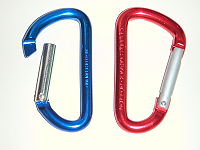
Photo from wikipedia
Titanium (Ti) is a lustrous transition metal which possesses excellent corrosion resistance in several aggressive environments but is attacked by acidic fluoride media. In this work, the addition of fluoride… Click to show full abstract
Titanium (Ti) is a lustrous transition metal which possesses excellent corrosion resistance in several aggressive environments but is attacked by acidic fluoride media. In this work, the addition of fluoride ion to nitric acid on the corrosion behavior of Ti and air-oxidized Ti was studied. Air oxidation of Ti at 800 °C for 5 h resulted in the formation of an intact rutile TiO2 layer with a thickness of about 35 μm. The corrosion resistance was investigated from the polarization resistance ($$R_{\text{P}}$$RP) values which were obtained from linear polarization and electrochemical impedance spectroscopy (EIS) measurements. A decrease in the $$R_{\text{P}}$$RP value of Ti with the addition of fluoride ion in nitric acid was observed, and this indicated the formation of an unstable layer, which resulted in accelerated dissolution. The several order increase in the $$R_{\text{P}}$$RP value of air-oxidized Ti in nitric acid containing fluoride ions pointed the improved resistance to corrosion. The diffusivity of species through the air-oxidized TiO2 layer was estimated from the electrochemical equivalent circuit (EEC) analysis of EIS data. Even though the diffusivity increased by several orders with the addition of fluoride ions, air-oxidized Ti provided better protection against nitric acid containing fluoride ions than Ti. The corrosion rates of Ti and air-oxidized Ti in boiling nitric acid containing fluoride ions were also estimated from weight loss experiments. Even in boiling fluorinated nitric acid, air-oxidized Ti provided better corrosion protection, with corrosion rates of about 1000 times less than that of Ti.
Journal Title: Transactions of the Indian Institute of Metals
Year Published: 2019
Link to full text (if available)
Share on Social Media: Sign Up to like & get
recommendations!